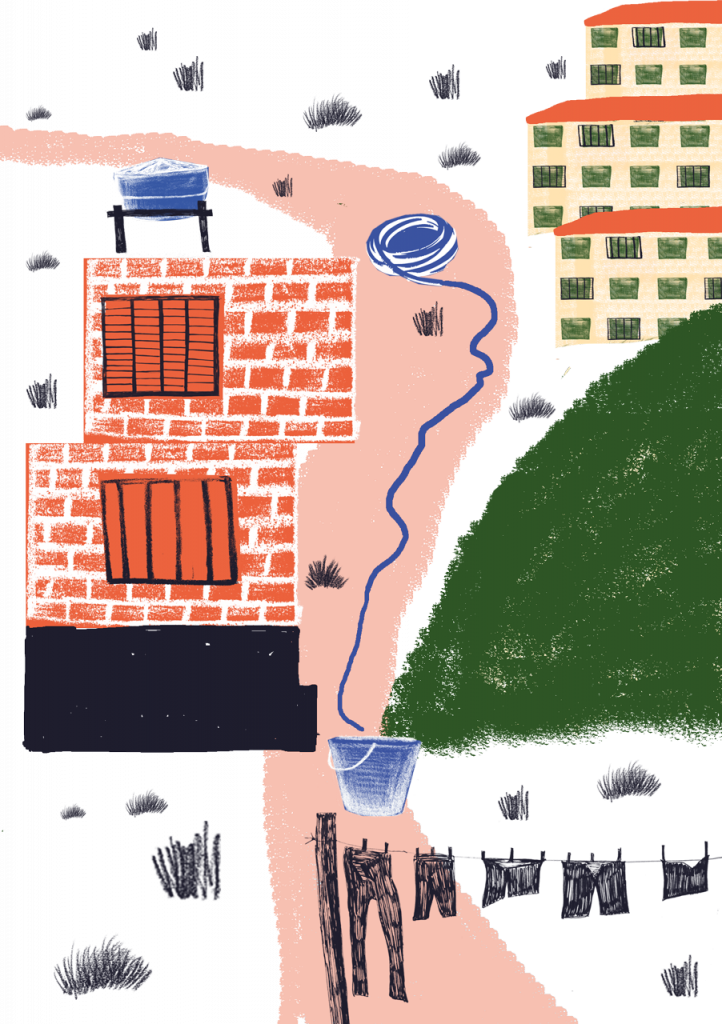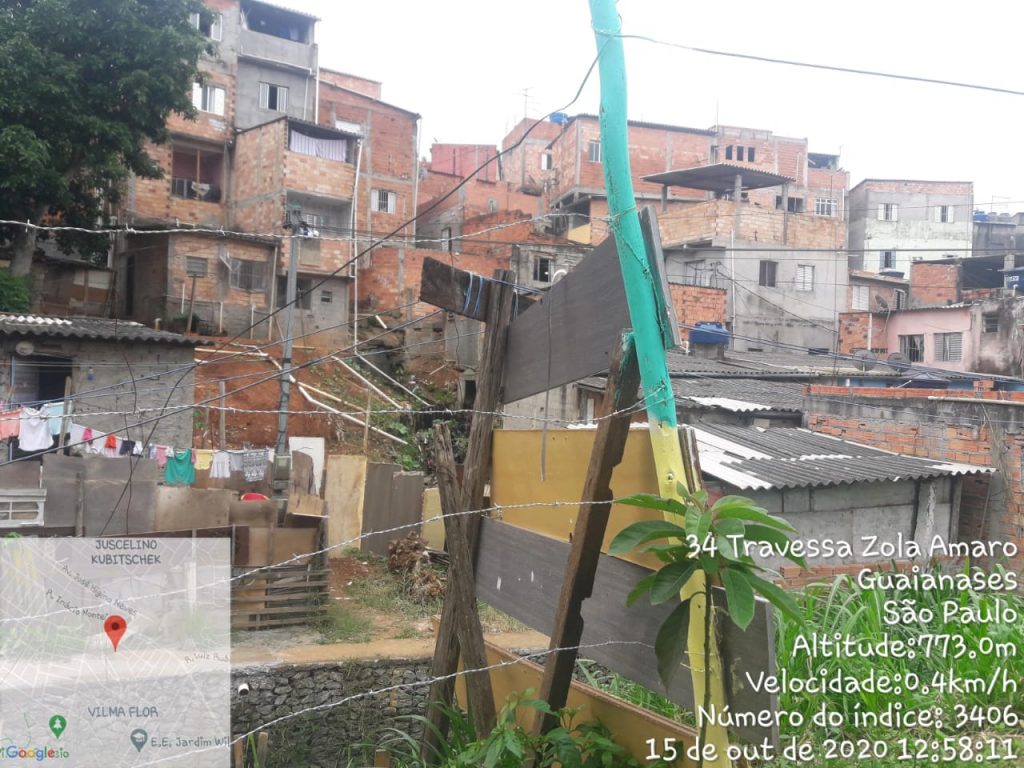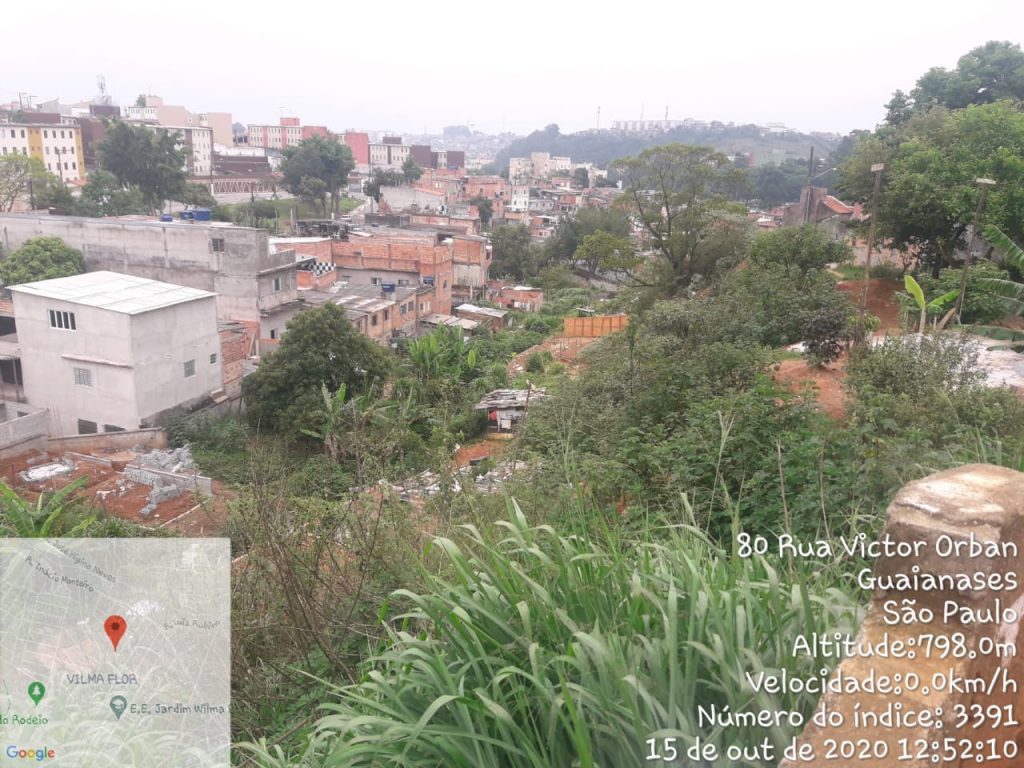
Jardim Wilma Flor, Cidade Tiradentes district, Cidade Tiradentes Sub prefecture
Community leader Dona Elma is 64 years old, declared herself a woman, a black woman and a social worker. She is not born in São Paulo, but lives in Conjunto Casa Branca, in Jd. Wilma Flor, 34 years ago. Since she was young, she had already worked politically in youth groups in the Catholic Church. In the city of São Paulo, he has been carrying out community work for 28 years. He believes that the time of existence and the practice of the task force are the reasons that ensured some sanitation infrastructure for his community.
“I started to get involved when I was about 15 years old, in the Catholic church. Since then I have not been able to stop. Now here, in São Paulo, we started in the housing area due to homelessness, you know. Paying rent is unsustainable for us ”
“The community where I live was built on a joint effort, we have running water. Unlike the Rubino community, the Vista Alegre community, the Wilma Flor community, and several other favelas here in Cidade Tiradentes. ”
“Ah, sometimes up there, people shut off the water, then it’s missing and we don’t know, right”.
“People who have children aged 3 to 4 months, lacking water is not very good for those who have children. Especially when you want to drink, you want to bathe, right. When it’s very hot and the child comes to you and says ah, mom, it’s very hot. And will you tell him ah, son how can I bathe you if the water is low? Is very bad.”
The resident Roberta is 29 years old, a black woman, single and working as a day laborer. Born in Iguaí, Bahia, she arrived in São Paulo 10 years ago. She has lived in the occupation of Estrada Manoel de Oliveira Ramos for five years in Jardim Wilma Flor. Her movement to the occupation was encouraged mainly by the difficulty in paying the rent. Every day, buckets are used to bring water into her house.
The resident Ana Cláudia is 36 years old, is a white woman and single. Born in São Paulo, she has lived in Jardim Wilma Flor ever since. However, eight years ago she had to move to her parents’ house to stop paying rent. As they do not have access to water, the family, on rainy days, uses an old water tank as an improvised reservoir. Or, over the course of the day, when the hoses manage to capture some water from the alternative connection in the public network.
“It is simply a 500-meter pipe that we take from the other street to get water for us. This is when they do not burn the hose, which the residents even bought. Without that, we run out of water ”.
“Sewerage system?! Ah girl, not even a garbage truck passes by my house (…). There is no piping and sewage network made. In fact, the sewage falls into the river, a river that has water. I think because they don’t remember us, either. They speak, they speak and do not care for the communities that need it most. Whoever has a child there, gets worms, diseases, you know … They don’t care about us very much. ”
“Every day they hang up around 9 pm and only come back in the morning. They don’t say the reason, they just interrupt. There is no explanation, right. ”
“It is not just the lack of water … When the water returns, the pressure in the pipe comes, everything is bursting, you know. Shower pops, faucet pops and that is often, not once in a while. ”
The resident Joel is 36 years old, declared himself a man, brown, autonomous and single. He was born in the city of São Paulo and has lived in Jardim Wilma Flor ever since. He works at the local residents’ association. Like the interviewed leadership, he lives in an old area of the neighborhood, where Sabesp has sanitation infrastructure. However, the service is no longer provided every night, which forces the resident to have to organize to perform household chores, such as washing clothes, taking a shower, in the morning.
The resident Taiane is 35 years old, a woman, single. She was born in the city of São Paulo and lives in the Luiz Rubino occupation. After suffering an eviction in the south of the capital, she went to the Wilma Flor community more than 10 years ago. One of the reasons for this alternative was the lack of resources to pay rent and other basic services, such as water and electricity. The resident obtains water either through informal connections from Sabesp’s public network, or from a three-meter well dug inside her kitchen. She said that the well has a lot of volume, which allows it to fill up to two 500-liter boxes and lend it to neighbors.
“When I got here it was very difficult. There was no bridge, girl, we just needed to fall into the river. ”
“We want the address, we want drinking water to come, we want one, what do you call it, proof of address, you know. To have a name, we want to have a name, to have water and electricity, right. ”
Jardim Wilma Flor is part of the Guaianazes region, in the East Zone of São Paulo. The neighborhood started to be occupied approximately 40 years ago, where the Casa Branca Housing Complex, one of the oldest in the region, has about 1,750 families. Approximately 3,500 families live in the area around Wilma Flor street and there are still recent occupations, such as Luiz Rubino and Vista Alegre streets.
Regarding infrastructure, there is an overlap of material conditions for access to water in Jardim Wilma Flor. In the central part of the neighborhood there is a water and sewage network. Residents stated that the service is managed by Sabesp. In marginal occupations, on the contrary, there is no basic sanitation infrastructure and many streets have no pavement. Even in the most structured areas, however, supply is interrupted daily, always at night.
The main problems of Jardim Wilma Flor start with the risk of eviction of some communities, including the lack of water, shortages and daily interruption of the supply service. In areas where there is infrastructure, water is cut off every night, forcing it to be stored in water tanks and cisterns. However, not all residents have these structures in their homes. In addition, in the peripheral locations of the neighborhood, residents are obliged to collect water by hoses and buckets from official supply networks or by buying gallons for their own consumption.
The strategies for securing water are diverse. Storage is the most common of these. Residents resort to the use of buckets, reservoirs and water tanks. In the Wilma Flor, Vista Alegre and Luiz Rubino communities, however, residents bought hoses and made a call on Sabesp’s public network that serves another block in the neighborhood. Some reports also indicated the need to search for water in other neighborhoods in the city, which leads to a daily movement of gallons of water for basic family consumption.




Photos by: Marilene Ribeiro de Souza e Sheila Cristiane Santos Nobre






